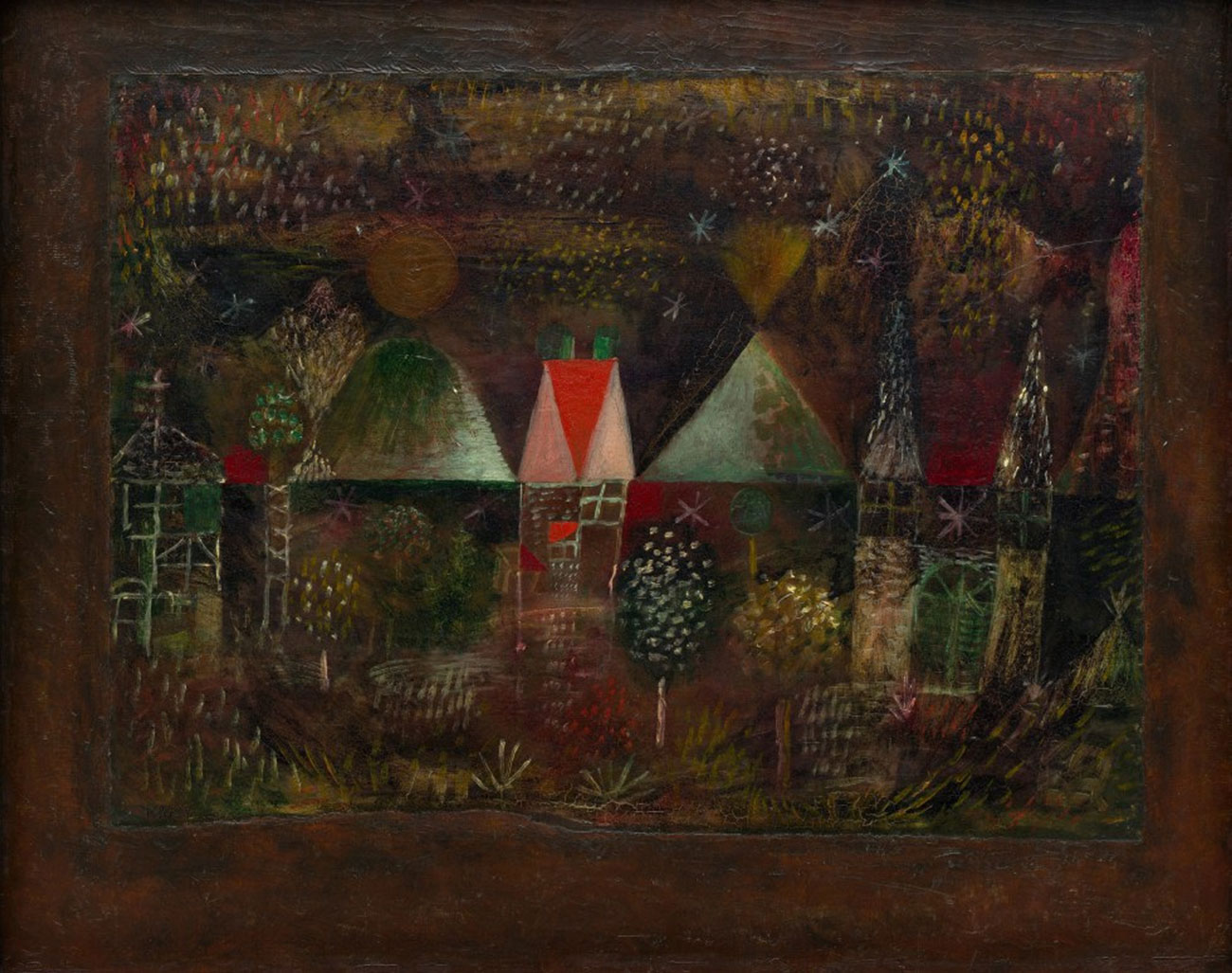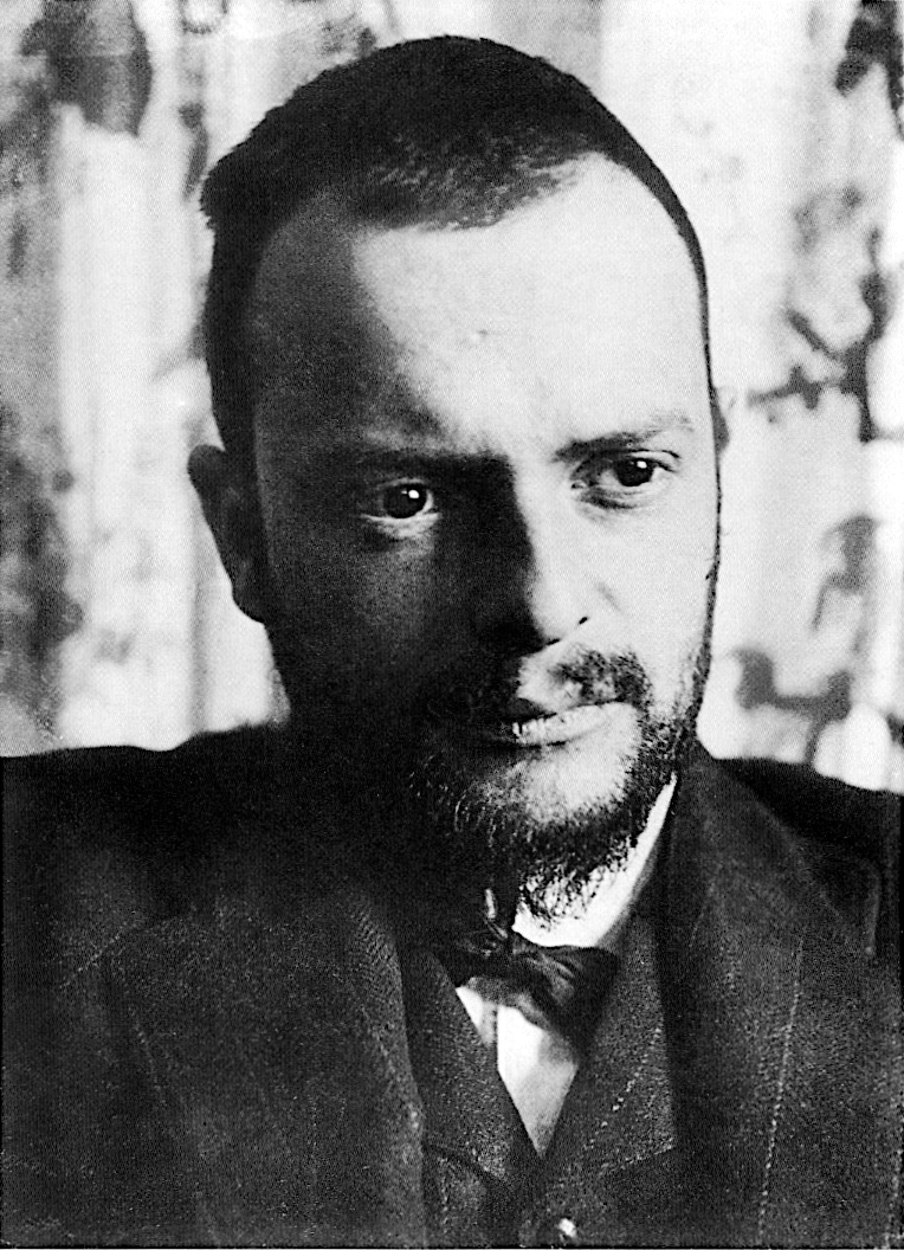Oh, we have missed Paul Klee so much!
Born in December 1879, Klee’s early aspirations were musical, but as a teenager he decided on a career in art and in 1898 began studying at the Academy of Fine Arts in Munich. He had talent for drawing, but confessed that because he did not understand color he would probably never learn to paint. What, then, are we to make of the beautiful, colorful painting, Night Feast?
Across the body of work that comprises the art of Paul Klee there is so much variation that he defies stylistic categorization, but this artwork is rooted in Expressionism. It depicts a scene at night of structures, trees, foliage, sky, and stars. The buildings are childlike in the way they are formed: a house, maybe a barn, and a church (perhaps) are represented by simple lines and shapes, and further shapes that appear to be in the distance are connected to the foreground by a horizontal line that runs across the center of the painting. For me this demarcating line has the effect of simultaneously linking and separating foreground and background, sky and land, vastness and closeness. I feel I am looking into a small, warm place beneath unfathomable heavens. This warmth comes of course from Klee’s use of color—the skill he couldn’t master!
Here he uses opposites of red and green and achieves harmony; trees are dotted with white as though highlighted by moonlight; the stronghold of the central red roof is balanced by red colorations to either side and below, and in turn offsets the green of the land and the objects on the horizon line—are these mountains? There is something fundamentally dreamlike about this work, as though different possibilities are played out together, but it doesn’t matter because it is not real. When I look at this painting I could be asleep and away in a world where everyday things are merged with the oddments of my subconscious.
During his time as a faculty member of the Bauhaus (1921 to 1931), Klee developed his own color system. He took the existing color wheel and transformed it into a sphere that could then represent color as hue, value, and saturation. He also had the idea that color has visual weight: red is quite heavy according to Klee. In 1914 he stated in his diary that “Color and I are one”—a statement that I would agree with when looking at Night Feast. It is a testament to the power of this painting that it can so absorb the onlooker, and it makes it rather difficult to imagine that Klee believed he would never be able to harness the expressive and emotional power of color.
- Sarah
Have a look at the article "Paul Klee’s Autumn Atmosphere" on DailyArtDaily.com :)


 Paul Klee
Paul Klee